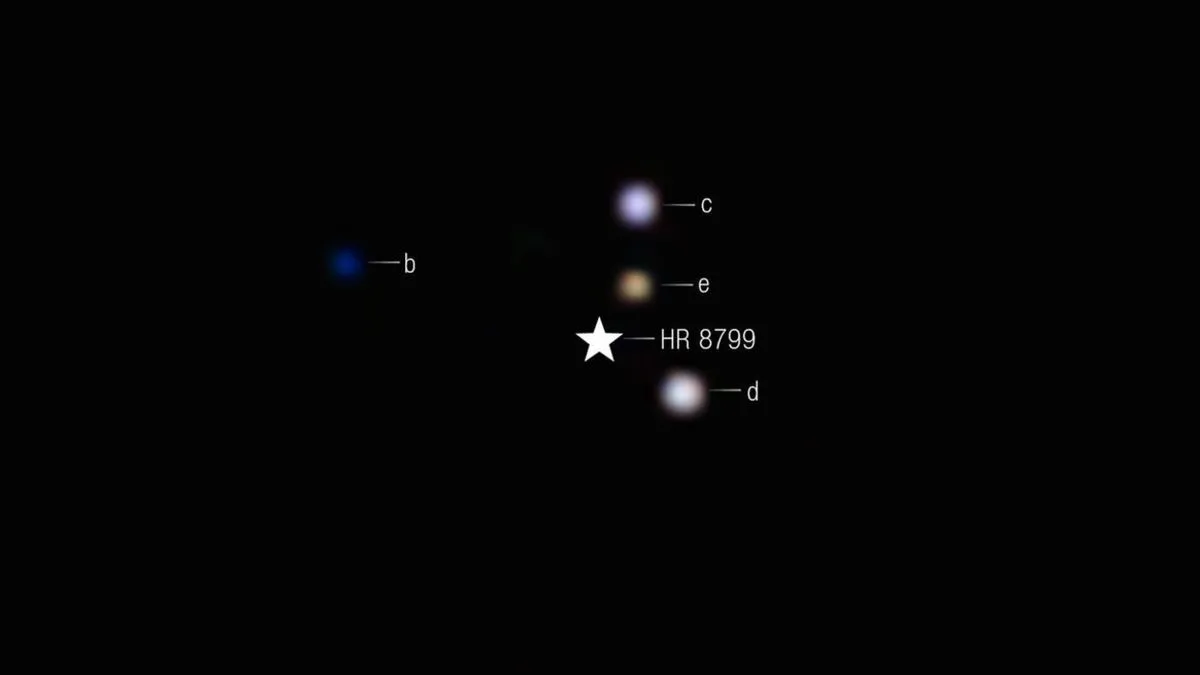
A team of astronomers has made a groundbreaking discovery using the James Webb Space Telescope (JWST), successfully capturing its first direct images of carbon dioxide gas on a planet located beyond our solar system. This remarkable achievement not only showcases the telescope's advanced capabilities in direct imaging but also offers significant insights into the formation of planets within our solar system and throughout the universe.
The latest observations from JWST centered on the HR 8799 system, which comprises four massive planets orbiting a host star approximately 130 light-years away in the constellation Pegasus. Previous studies revealed that these exoplanets are more massive than Jupiter, with orbital periods ranging from several decades to centuries. The HR 8799 system has long piqued the interest of astronomers due to its youth—at just 30 million years old, these planets continue to emit residual heat from their formation, a phenomenon that JWST successfully observed using specific wavelengths that highlight atmospheric details.
The discovery of carbon dioxide in the atmosphere of the exoplanet HR 8799 e indicates a substantial presence of heavy metals, supporting the leading theory of planet formation known as the bottom-up theory. This theory posits that planets gradually coalesce over millions of years from a disk of gas and dust surrounding a young star, mirroring the formation of planets in our own solar system. However, recent research has introduced compelling evidence that planet-forming material can also collapse rapidly into a massive planet, suggesting that the planet formation process is more intricate than previously understood.
Determining which formation process is more prevalent among planets across the universe can provide valuable clues for astronomers studying distant exoplanets. William Balmer, an astronomer at Johns Hopkins University and the lead researcher of this study, expressed hope that such research will enhance our understanding of our solar system, the potential for life, and our place in the cosmos. “Our objective is to capture images of other solar systems and analyze their similarities and differences compared to our own,” Balmer stated. “From this analysis, we can gain insights into whether our solar system is unique or typical.”
JWST's observations have revealed that the planets within the HR 8799 system exhibit a higher abundance of heavy elements than previously believed, indicating that they likely formed in a manner analogous to our solar system's gas giants, Jupiter and Saturn. Furthermore, JWST detected infrared light emanating from the innermost planet, HR 8799 e, as detailed in a study published in The Astrophysical Journal. These findings underscore the telescope's sensitivity in imaging faint planets that are often overshadowed by their much brighter host stars.
Directly imaging exoplanets is a formidable challenge, as distant planets are frequently outshone by the luminosity of their host stars. Rémi Soummer from the Space Telescope Science Institute, who previously led JWST's coronagraph operations, highlighted the anticipation surrounding this achievement: “We have been awaiting this confirmation for 10 years, and now we can engage in exciting scientific inquiry.”
In addition to the HR 8799 system, JWST also imaged the star system 51 Eridani, situated 97 light-years away. The telescope successfully captured images of 51 Eridani b, a cool, young planet orbiting its star from a distance roughly equivalent to that of Neptune and Saturn from the Sun. Upcoming observations aim to utilize JWST's starlight-blocking coronagraphs to examine a broader range of giant exoplanets and compare their compositions against various theoretical models.
The new observations not only pave the way for detailed studies to determine whether certain exoplanet candidates are indeed giant planets or objects like brown dwarfs, which form similarly to stars but lack sufficient mass for nuclear fusion, but they also carry significant implications for planetary habitability. Balmer remarked on the importance of understanding the formation of giant planets, stating, “If these massive planets behave like bowling balls in their solar systems, they could either disrupt or protect smaller planets, influencing their potential for habitability.”
Overall, the findings from the James Webb Space Telescope significantly enhance our understanding of planetary formation, survival, and the habitability of Earth-like planets in the future.